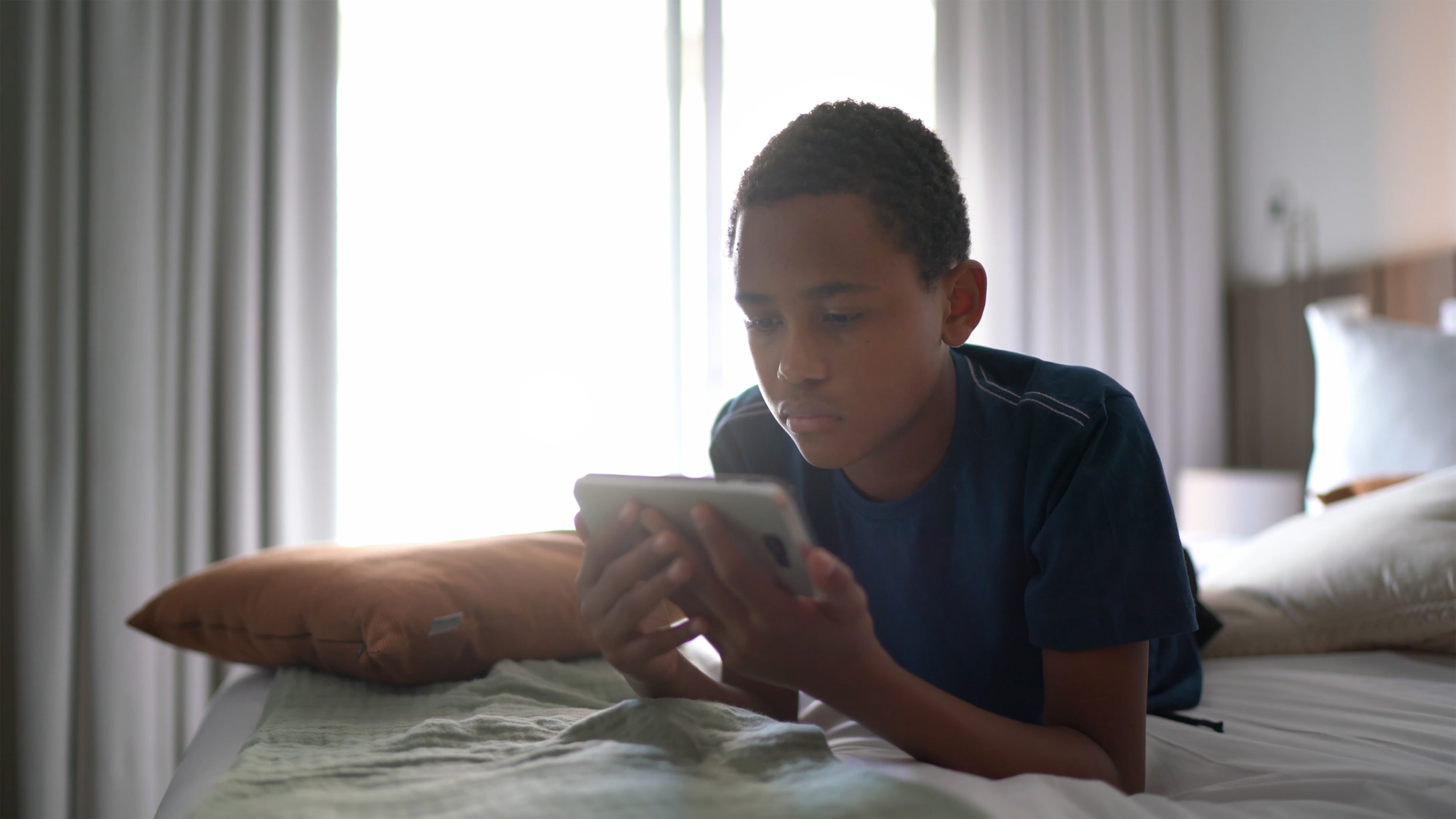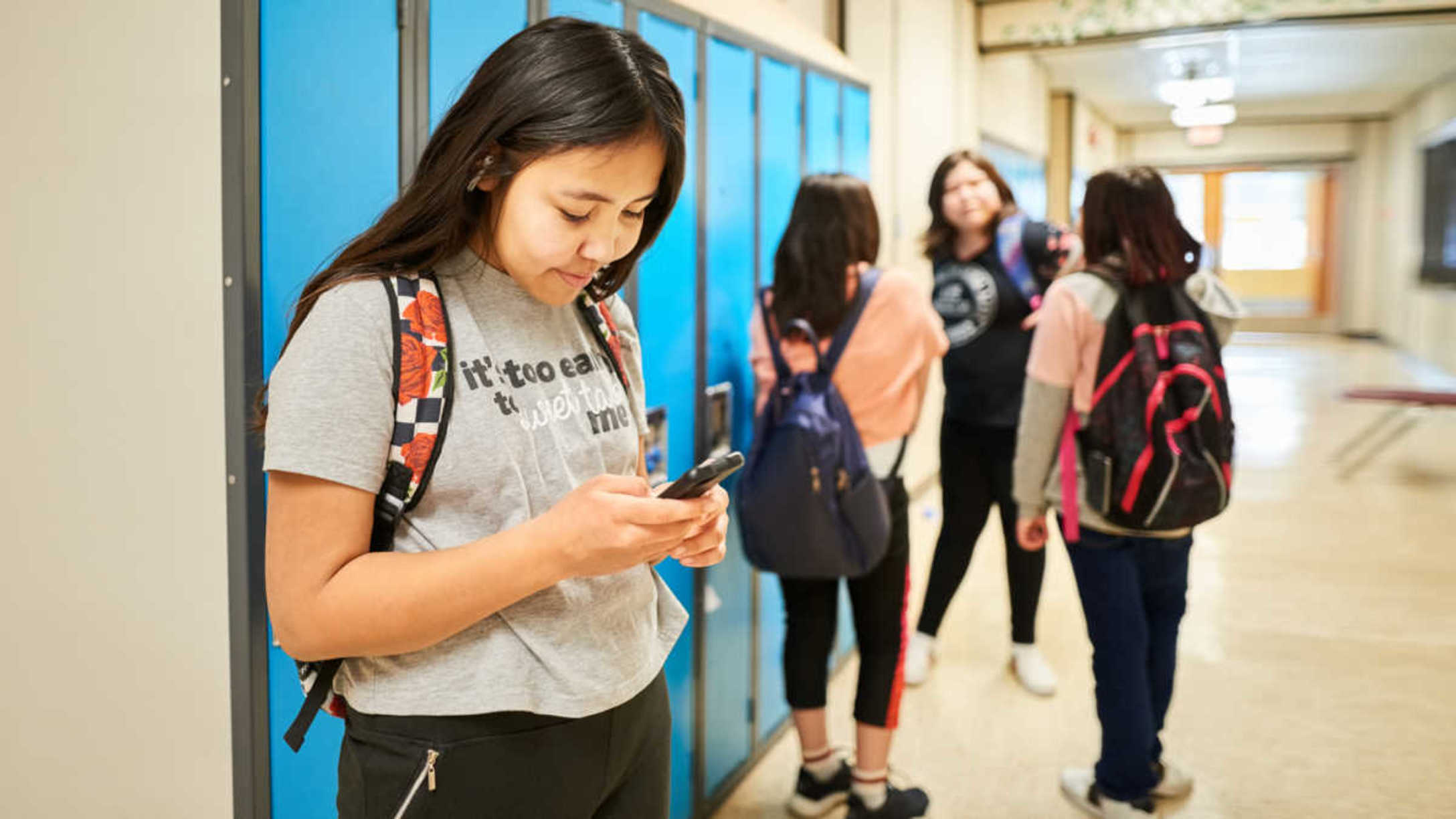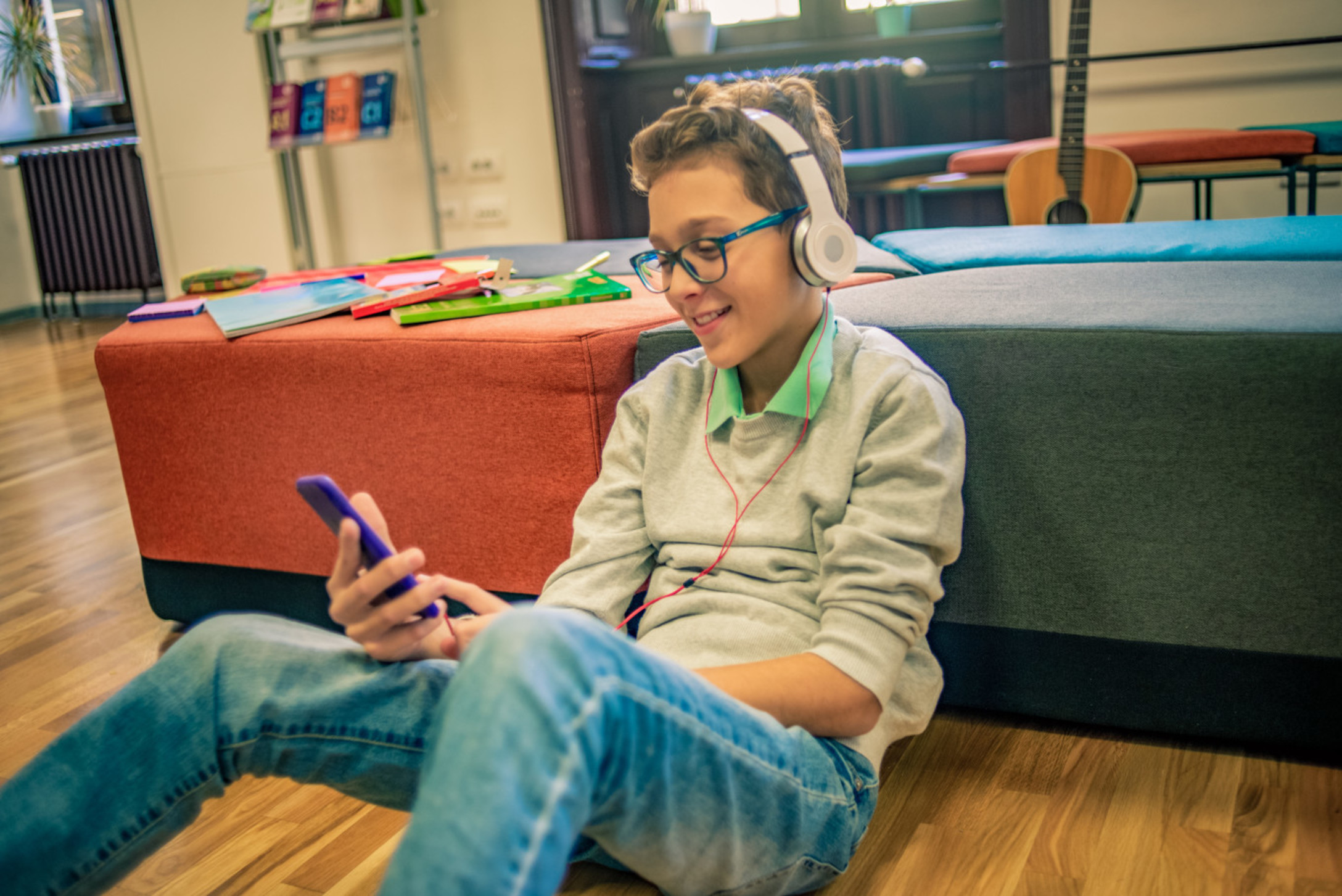For better or worse, one of the quintessential milestones in modern kid life is the day that they get their first phone. Although there is still a ton of debate about how young is too young for a phone, most parents seem to accept that their tween or teen is likely to want or even need a cellphone prior to high school. We suspect most parents also want their kids to be responsible phone owners and worry about all of the things that can go wrong when it comes to social media and smartphone usage.
The truth is that having a cellphone can be a wonderful way for a kid (or teen) to learn some valuable lessons about taking care of their property and about making smart decisions in the digital age. The other truth? Kids and teens need help to learn these valuable lessons. That help comes in the form of setting some important boundaries to keep them physically, emotionally, legally, and sexually safe once they have the equivalent of the whole internet in their pocket at all times.
We’re here to help parents with some suggestions for common sense phone rules that all families should consider. Pro-tip: Consider making a cellphone contract with kids that specifically spells out these rules and sets family expectations for phone usage. Safe cellphone use starts with open communication from parents and clear boundaries for kids.
More from CafeMom: My Kid's Cellphone Actually Made Me a Better Mom
Prohibit phones in the bedroom at night.

Developmentally, kids need a good night of sleep to learn, grow, and stay emotionally regulated. According to the National Institute of Health overuse of cellphones (especially at night)results in both less sleep and lower quality sleep for 5- to 8-year-olds. Between the blue light, the temptation to go online, and the possibility of noisy notifications from apps or messages from friends, having a cellphone in their room can make it hard to fall asleep for kids and teens. Make a family rule that cellphones are stored and charged in a common area at night and not in kids' rooms.
Biking and phones don’t mix.

Help make sure kids stay safe as pedestrians and while using things like bikes and scooters by setting the expectation that phones are for use while standing still or sitting down. Distracted walking or biking can be as dangerous for kids as distracted driving is for parents, so let this be a reminder to keep phones out of reach when we’re behind the wheel.
Set up parental controls to require permission to download new apps.
One of the choices every family has to make is which apps are fine for kids to use and which apps aren't allowed. Parents should take charge of setting up the kid's new phone with the allowable apps and consider turning on parental controls so new apps can't be downloaded without parental approval. Also see if it is possible to turn off the option to make purchases without parental consent. This may also help prevent in-app purchases that can add up quickly.
More from CafeMom: 15 Apps That Make Tracking Health Easier
Set and share the lock code.

Using a lock code for a phone is a smart way to protect privacy, so kids should set one for their phones. That should be done with the expectation that their parents will know the code and will be able to unlock the phone if they want to check for safe phone usage.
Camera rules, part 1: What kinds of photos are allowed?

Cellphone cameras are so handy but they are also where kids can get into sticky situations or make bad choices, so explicit conversations must take place about what kinds of photos or videos they are allowed to take, especially of themselves. Some parents go with a "No pictures with no shirts/pants" rule, some go with a "Nothing that wouldn’t be allowed at the public pool rule," and others draw other lines. The key is being clear and age appropriate about what kinds of selfies are fine and why keeping their digital images clean is important to their safety.
Camera rules, part 2: No bullying and no photos of others without their consent.

Cellphones make it WAY too easy for people to film or record others in ways that are embarrassing or designed to make them feel bad. One rule is to not take photos of other people that are designed to embarrass or mock them and to not take or share images of other people without their consent. There is also an opportunity for parents to model this behavior by asking their own kids for permission before sharing photos of them online.
More from CafeMom: Teen Bullies Her Own Twin & His Friends After She Finds Them Playing With Stuffed Animals
Camera rules, part 3: The internet is forever.

In addition to telling kids, tweens, and teens about what kinds of photos are appropriate to take of themselves and others, now is a very good time to introduce them to the idea of a digital footprint and that the internet is forever. Set the expectation that they should never send an image that they wouldn’t want their teacher, grandma, or mom and dad to see, and explain why they can’t control where a photo goes once it is online.
Camera rules, part 4: Sexting and nudes.
For tweens and older kids, start by acknowledging that it's normal to be curious about sex and that, as they get older, they may want to express sexual interest in people they are dating. This is also a time to build on the idea that the internet is forever by reminding them that once they send a sext or sexy photo, it can go anywhere and can never be taken back.
It can also be important to remind teens that sexual images of themselves are a form of child pornography and can have legal consequences for the person they send it to. These aren’t the easiest conversations, but they are critical.
Set social media rules.

Just because a kid or teen has a phone doesn't mean they can or should have access to every social media site. There is good evidence that some social media sites can be really harmful for kids and tweens, especially for girls. Harvard professor Bryn Austin noted in a 2021 article that "We’ve known for years that social media platforms — especially image-based platforms like Instagram — have very harmful effects on teen mental health, especially for teens struggling with body image, anxiety, depression, and eating disorders."
Parents should decide which social media apps, if any, are OK for their kids and set them up together. Parents should also check their kid's social media profiles regularly to look for concerning posts, messages, or follows.
Phones are not for sharing.

Yes, a kid can lend a phone to a friend to call a mom or dad if they forgot theirs, but kids should also be cautioned against letting their friends borrow their phones for extended periods of time or to use them when they aren't around. A child should be informed both that phones have a lot of private information on them and should be kept safe from other people's eyes and that they don't want to be responsible if a friend uses their phone to make a bad decision.
Explain the rules of phone etiquette.

Make sure kids know the basic rules of phone etiquette such as "No listening to music or videos in public places without headphones" and "No creating a public nuisance while filming themselves or taking photos," which means no blocking traffic or getting in the way of other people in public spaces.
Be explicit about what level of privacy they can expect from parents.

Developmentally, kids, tweens, and teens aren't always prepared to think about the consequences of their own actions or to predict when something might go wrong. Many parents think it is appropriate to periodically check their kids' phones for content, photos, or messages that might cause concern. Letting kids know in advance that their phone can be checked by mom and dad – and why – can help establish trust on both sides.
Know the school policy on phones.

Parents should make sure they and their children know what the school rules are about phone usage and make sure they follow them. Talk about where they can safely store their phone during school and the importance of using technology respectfully during the school day.
Parents should also make sure they are helping their kids follow the rules by not texting or messaging their kids during class time. Amy Johnson, a middle school teacher in Minnesota, tells CafeMom that "Almost half of the time when I have to tell a kid to put their phone away, it is because they are texting their parent. Parents are such a part of the problem. If it isn't an emergency, save your messages for after school, please!"
Teach them what to do about spam.

Once someone has a cellphone, they now have a way to get spam calls and texts. Make sure kids know what spam is, what it can look like, and how to delete and block spam numbers. Kids can be easily tricked by spam texts that seems like it is from a friend or a simple wrong number, so remind them to never talk or message with anyone they don't know and to ask a parent if they aren't sure. Talk about the importance of never giving out private information on the phone, including address and photos, when they don't know who they are talking to.
Talk about what they should do if/when they make a mistake.

Kids make mistakes sometimes. When they make a mistake with a phone (losing it, going to a website they shouldn't go to, being involved with bullying, etc.) they might not know how to fix it. Parents should be explicit that they are the person their kid should go to for help and should regularly check in to make sure their kid is feeling confident about knowing their phone boundaries.




